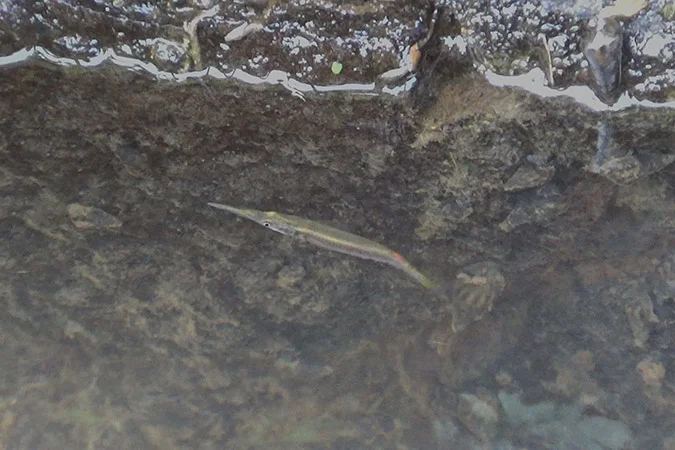Julung or wrestling halfbeak or silver halfbeak (Dermogenys pusilla) is a species of animal in Zenarchopteridae, small fish, slender, very long mandible, silver or golden or reddish color, live in fresh water, rivers and ditches that have fast currents.
D. pusilla has sexual dimorphism. Females are larger in size and grow up to 7 cm. The male is about 5.5 cm tall and usually has black patches on the chest, red patches on the dorsal fin and golden or yellow patches on the dorsal fin.
Silver halfbeak forages on the surface especially small invertebrates including crustaceans, insect larvae, mosquitoes and flying insects that fall to the surface of the water. The upper jaw is raised to open the mouth. Females give birth to about 20 offspring after a gestation period of one month.
Kingdom: Animalia
Phylum: Chordata
Subphylum: Vertebrata
Class: Actinopterygii
Order: Beloniformes
Family: Zenarchopteridae
Genus: Dermogenys
Species: Dermogenys pusilla
D. pusilla has sexual dimorphism. Females are larger in size and grow up to 7 cm. The male is about 5.5 cm tall and usually has black patches on the chest, red patches on the dorsal fin and golden or yellow patches on the dorsal fin.
Silver halfbeak forages on the surface especially small invertebrates including crustaceans, insect larvae, mosquitoes and flying insects that fall to the surface of the water. The upper jaw is raised to open the mouth. Females give birth to about 20 offspring after a gestation period of one month.
Kingdom: Animalia
Phylum: Chordata
Subphylum: Vertebrata
Class: Actinopterygii
Order: Beloniformes
Family: Zenarchopteridae
Genus: Dermogenys
Species: Dermogenys pusilla
